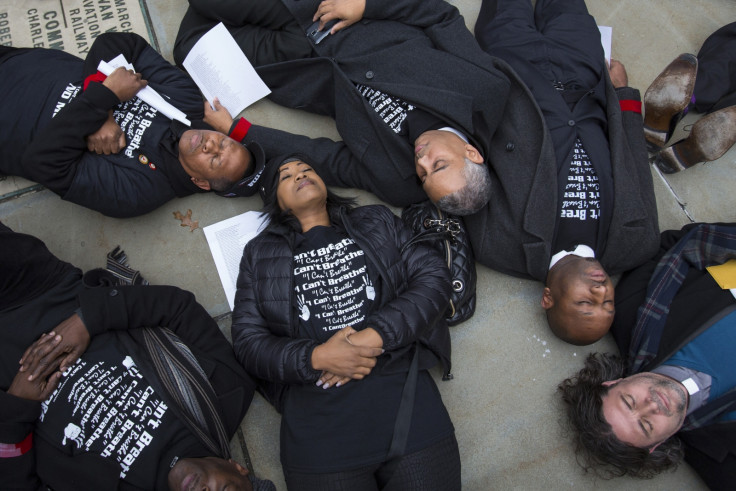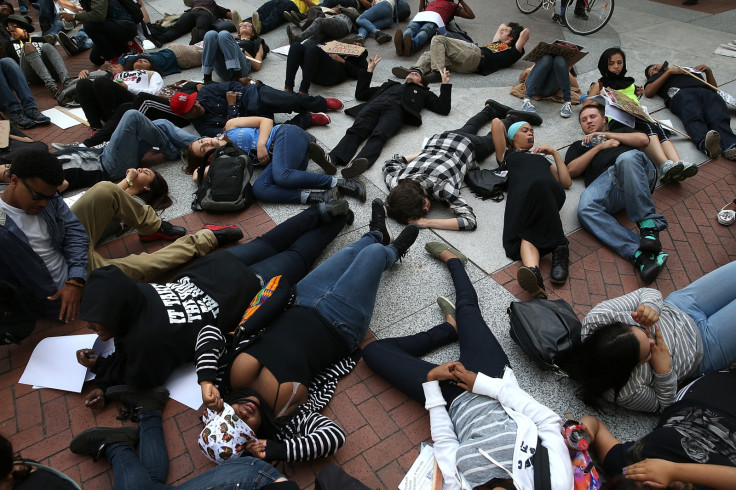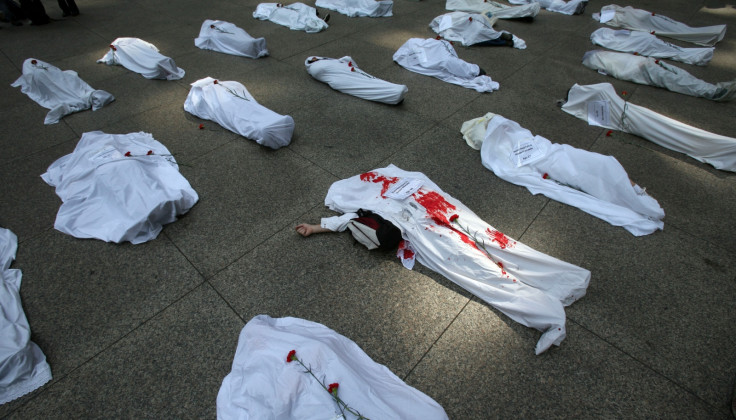Eric Garner and Michael Brown 'die-in' demos: When did lying down become a form of protest?

In the aftermath of the deaths of Eric Garner and Michael Brown, thousands have staged "die-in" protests across the United States.
Medical students have planned die-ins at 70 locations from New York to Chicago, in wake of the grand jury decisions not to indict in the killings of the two unarmed African-American men by white police officers.
Along with clicktivism on Twitter and Facebook, with the hashtag #BlackLivesMatter and #ICantBreathe, the phenomenon has reached Britain. On Thursday 11 December, 76 people were arrested in a die-in demonstration at Westfield shopping centre in Shepherd's Bush in west London.
Protesters held signs carrying the same "Black lives matter" message as seen in US demonstrations.
But what are die-ins, and why have they spread across the Atlantic?
People 'pretending to be dead'
A die-in involves hundreds of people lying motionless on the ground, pretending to be dead, in pedestrian areas. Grabbing the attention of passers-by, haunting images of die-ins have been shared widely on social media. They are designed to shock and trigger emotion; in this case, to protest the deaths of two men.

Although die-ins are have recently gained popularity in the UK, their origins lie in the US. It is a close relative of the sit-in, an integral part of the non-violent strategy of civil disobedience and mass protests that eventually led to the passage of the Civil Rights Act of 1964.
The die-in was also an integral part of the Voting Rights Act of 1965, which struck down many racially motivated barriers used to deny voting rights to minority groups in the US. Most notably, sit-ins took place in Greensboro, North Carolina and Nashville, Tennessee in 1960.
Tactic used by gun control activists
A relatively modern tactic, die-ins have been used by anti-abortion, Aids and gun control activists since the 1970s and 1980s, as well as in protests against American-fought wars and conflicts such as Gaza.
According to H-Net, an online forum for researchers and teachers to discuss humanities and social sciences, the Oxford English Dictionary dates the earliest appearance of the term "die-in" to 1970.
That year, the phenomenon was referenced in an article in the Harvard Crimson, which described how environmental activists would stage a demonstration in April as part of Earth Day.

In 1986, the Philadelphia Inquirer reported a demonstration by 25 students from the Penn Anti-Apartheid Coalition, who staged a die-in at a meeting of the University of Pennsylvania's trustees' executive board.
"Shortly before 3pm, as the monthly meeting of the executive board was adjourned, the 25 students who attended the session stood and took off their sweaters and jackets to reveal blood-splattered T-shirts symbolising the bloody deaths in racially segregated South Africa," the report read.
"The students then lay on the floor in front of the 11 trustees, forcing them to step over the students' bodies as they left the meeting room at the Penn Faculty Club on campus."
In 2003, around 100 anti-war activists protested against the Iraq War in Philadelphia.
According to the Inquirer, they chanted: "We won't be silenced. We won't be tamed. This was in Iraq is not in our name." The demonstrators then returned to the city hall, where they staged the die-in.
A similar protest in September 2007 saw hundreds of people lay on a walkway in front of the Capitol in a demonstration against the Iraq War. On that occasion,189 people were arrested, including ten veterans of the war.
© Copyright IBTimes 2025. All rights reserved.






















